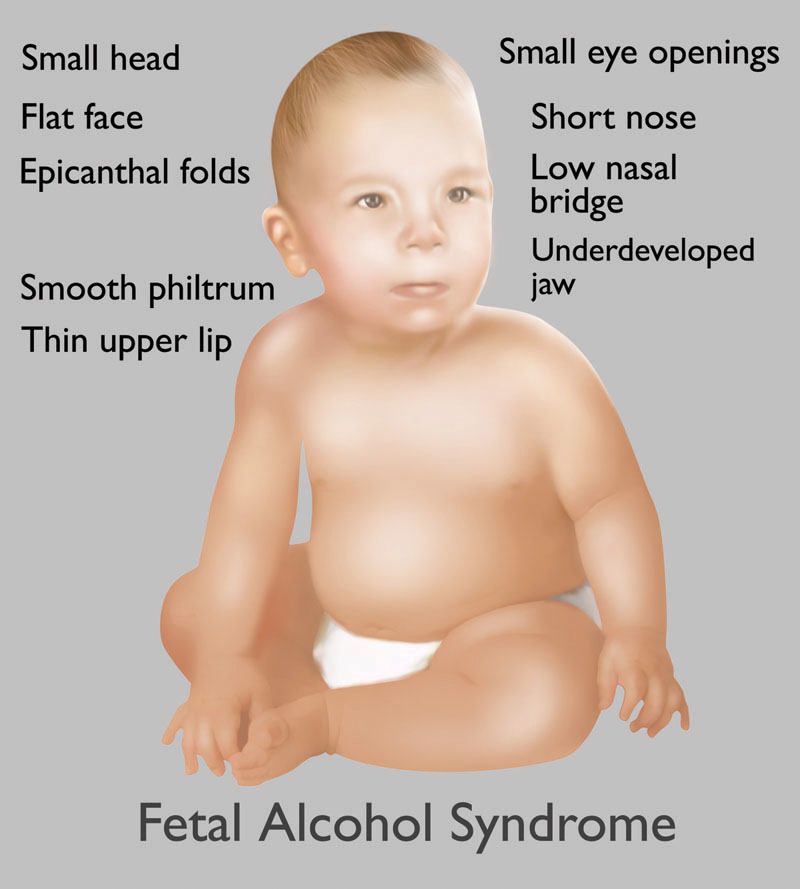14.1 Intellectual Disability (Intellectual Developmental Disorder)
When either Lela or Carlos calls Richie’s name, he often seems to ignore it. They can tell that he’s not deaf—he clearly notices street noises and other sounds, and he startles in response to loud noises. His cognitive abilities are noticeably less developed than Javier’s and Pia’s were when they were his age; Richie’s intellectual functioning doesn’t seem normal. Could he have intellectual developmental disorder?
What Is Intellectual Disability?
Intellectual disability A neurodevelopmental disorder characterized by cognitive abilities that are significantly below normal, along with impaired adaptive functioning in daily life; also called intellectual developmental disorder and previously referred to as mental retardation.
Intellectual disability (also called intellectual developmental disorder [IDD], and related to what was previously called mental retardation, a term that is generally no longer used) is characterized by deficits in cognitive abilities (significantly below normal), as determined both by standardized intelligence testing and by clinical assessment, along with impaired adaptive functioning in daily life. Specific deficits are in academic learning, in social understanding, and in “practical understanding” (such as knowing how to manage money) and involve a variety of cognitive abilities: reasoning and problem solving, planning, abstract thinking, judgment, and understanding complex ideas.
Although the DSM-5 criteria themselves do not specify a specific IQ score cutoff, the part of the manual that discusses the criteria in detail suggests that impaired intelligence would entail having an IQ score that is at least two standard deviations below average. On a standard IQ test where the mean is set at 100, an IQ approximately equal to or less than 70 (plus or minus 5 points) would be two standard deviations below average.
But DSM-5 is clear that a low IQ by itself is not enough to diagnose IDD; the child must also have impaired adaptive functioning in daily life as a result of the cognitive deficits. Adaptive functioning involves three domains, assessed relative to the person’s age and background:
- conceptual (language, mathematical, reasoning used to solve problems, and judgments in novel situations),
- social (being aware of and having empathy for other people’s experiences and emotions; the capacity for friendship and social judgment and communication), and
- practical (being able to care for oneself; manage money, school, and job responsibilities).
The deficits in intellectual ability and adaptive functioning (see TABLE 14.1) must have emerged during childhood and thus cannot be the result of brain trauma in adulthood.
|
| Reprinted with permission from the Diagnostic and Statistical Manual of Mental Disorders, Fifth Edition, (Copyright ©2013). American Psychiatric Association. All Rights Reserved. |

Although a person’s IQ score may serve as a rough guide to evaluating mental abilities, the most important criterion for determining the level of intellectual disability is the level of impaired adaptive functioning. DSM-5 specifies four levels of severity of these impairments—mild, moderate, severe, and profound—which reflect functioning in conceptual, social, and practical domains. In general, the greater the severity, the more impaired the person is likely to be:
445
- Mild intellectual disability. Most people with intellectual disability fall into this group. People in this mild range may be able to function relatively independently with training but usually need additional help and support during stressful periods and seem “immature” in social interactions.
- Moderate intellectual disability. Although they are not able to function independently, with training and supervision, people in this group may be able to perform unskilled work and take basic care of themselves; although able to have relationships, people in this range may not accurately interpret social cues.
- Severe intellectual disability. A small number of people with intellectual disability fall into this group. Adults in this group are likely to live with their family or in a supervised setting and are able to perform simple tasks only with close supervision. They may be able to speak in simple phrases and do simple counting. During childhood, they may begin speaking later than other children.
- Profound intellectual disability. The smallest number of people with intellectual disability fall into this group. People in this group need constant supervision or help to perform simple tasks and may communicate only nonverbally; they are likely to have significant neurological problems.
Information from parents and teachers may help the clinician to determine a person’s ability to function. Depending on IQ and level of adaptive functioning, someone with IDD may require supervision, ranging from minimal to constant care. Like Larry in Case 14.1, many of these people have needs and abilities that fall somewhere in the middle.
CASE 14.1 • FROM THE OUTSIDE: Intellectual Disability
Larry, a 34-year-old man with moderate [intellectual disabilities]…had been referred for complaints of seeing “monsters,” “scary faces,” and “the bogeyman.” He initially appeared paranoid and delusional, describing the feared bogeyman in detail. An assessment of possible neurochemical or physical factors that might help explain the recent onset of these symptoms yielded no significant diagnostic information….
Larry’s perception of monsters was specific to certain situations, such as being alone in a dark room….
Specifically, when asked to go alone to any dark place [including the dark stairwell in his group home, where Larry must go to carry out his assigned chore of taking down the trash], he became agitated, resisted, and made loud statements about monsters and scary faces….
Larry’s monsters could be attributed to his limited means of communicating his fear of being alone in the dark. [It appears, then, that Larry has a phobic response to the dark.]…
(Nezu et al., 1992, pp. 78, 164)
Larry had two disorders: intellectual disability and a specific phobia. because of his intellectual disability, he had difficulty explaining his fears. He received CBT for his phobia, which was successful, and he was then able to go down to the basement without fear.
Like people of normal intelligence, people with intellectual disability exhibit a wide variety of personality characteristics: some are passive or easygoing, and others are impulsive or aggressive; some people with intellectual disability, like Larry, may have difficulty communicating verbally—which can heighten aggressive or impulsive tendencies. People with intellectual disability are more likely than average to be exploited or abused by others. TABLE 14.2 lists additional facts about IDD.
| Prevalence |
|
| Onset |
|
| Comorbidity |
|
| Course |
|
| Gender Differences |
|
| Cultural Differences |
|
| Source: Unless otherwise noted, the source for information is American Psychiatric Association, 2013. |
446
CURRENT CONTROVERSY
Changing Mental Retardation to Intellectual Disability: Will Such a Switch Be Beneficial?
People with intelligence levels low enough to affect their daily life have been labeled in various ways over the decades. The newest change in the DSM-5 is to replace the diagnosis of mental retardation with that of intellectual disability. However, this is not simply a change in label; the criteria have changed: The diagnosis and its severity are no longer a function of the assessed intelligence level. (Previously the diagnosis and its severity were anchored in IQ scores of various ranges.) Rather, the diagnosis and its severity are now based on levels of adaptive functioning—how well the person can adapt and function—in three domains: conceptual, social, and practical.
On the one hand, the new name more accurately describes the disorder in that it is not simply that mental abilities are delayed (that is “retarded”). Moreover, changing the criteria to deemphasize IQ scores and emphasize the three domains of functioning is ultimately more relevant to people’s ability to function and their need for services.
On the other hand, if the name change has been made in order to reduce stigma, it could be just a matter of time before this new diagnosis becomes a stigmatizing label. The diagnosis may be more descriptive, but is the description accurate? If the emphasis is more on adaptive functioning than intellectual level, then using the diagnostic term “intellectual disability” could be confusing.
CRITICAL THINKING Do you think that the term intellectual disability will come to be as stigmatizing as mental retardation? Why or why not? Is there a better word than intellectual, given that the diagnosis focuses more on the ability to adapt and function than on intellect?
(James Foley, College of Wooster) Teratogens
447
Understanding Intellectual Disability
Teratogens Substances or other stimuli that are harmful to a fetus.
Many neurological events can lead to intellectual disability, some of which reflect the fact that the fetus was exposed to certain types of substances (such as drugs or a virus) or to other stimuli (such as radiation); such harmful substances and stimuli are referred to as teratogens. Intellectual disability may also result from particular complications during labor (such as occurs when a newborn receives insufficient oxygen during birth) or from exposure to high levels of lead prenatally or during childhood.
Neurological Factors: Teratogens and Genes
One type of teratogen is environmental toxins, to which a fetus typically is exposed through the placenta after the toxin has entered the mother’s bloodstream. Examples of environmental toxins include synthetic chemicals such as methyl mercury, polychlorinated biphenyls (PCBs), and pesticides. Exposure to these toxins in the first trimester of pregnancy can disrupt early developmental processes of the central nervous system (Lanphear et al., 2005). Intellectual disability may also arise because of a variety of genetic abnormalities, listed in TABLE 14.3.
| Cause of intellectual disability | Genetic abnormality |
|---|---|
| Down syndrome | Abnormality in chromosome 21 |
| Rett’s disorder (females only) | Abnormality in X chromosome (which is lethal for male fetuses) |
| Fragile X (the most common cause of inherited intellectual disability) | Repetition of a piece of genetic code on the X chromosome that becomes progressively more severe in each generation |
| Prader-Willi and Angelman syndromes | Deletion on chromosome 15 that has different consequences depending on which parent’s genes contribute the deletion |
| Phenylketonuria (PKU) | A genetically based defect in an enzyme, phenylalanine hydroxylase, that leads to a failure to convert phenylalanine to tyrosine. Unconverted phenylalanine is toxic to brain cells, leading to intellectual disability, which can be prevented if PKU is identified (through a blood test at birth) and the person adheres to a diet that restricts phenylalanine. |
| Congenital hypothyroidism | Inadequate production of thyroid hormone caused by a genetic mutation. The fetus gets thyroid hormone from the mother, but after birth, the deficiency leads to defects in the developing brain. If hypothyroidism is not detected within the first 3 months of life, the damage cannot be reversed, even with thyroid hormone replacement. |
| Source: For more information see the Permissions section. | |

The cognitive and behavioral deficits observed in people with intellectual disability occur because the brain does not process information appropriately, often because of abnormal brain structure. For example, fetal alcohol syndrome is a set of birth defects caused by the mother’s alcohol use during pregnancy. (Alcohol is a teratogen.) People who have this syndrome have an unusually small head size, which occurs in part because the frontal lobes are smaller than normal—specifically the portions involved in planning, carrying out tasks, and controlling impulsive behavior (Riley & McGee, 2005). All of these activities are difficult for many children with fetal alcohol syndrome.
Although severe or profound intellectual disability often involves global abnormalities, each case of mild or moderate IDD may have a unique profile of specific impaired abilities, related to the particular cause of the disability.
448
Psychological Factors: Problem Behaviors

People with intellectual disability often engage in two types of problematic behaviors that are not specifically mentioned in the DSM-5 criteria: (1) stereotyped behaviors (also referred to as stereotypies), which are repetitive behaviors that don’t serve a function, such as hand flapping, slight but fast finger and hand motions, and body rocking; and (2) self-injurious behaviors, such as hitting the head against something and hitting or biting oneself. People with intellectual disability who exhibit both stereotypic behaviors and self-injurious behaviors have greater deficits in nonverbal social skills than those with only one type of problematic behavior (Matson et al., 2006).
Stereotyped behaviors Repetitive behaviors—such as body rocking—that do not serve a function; also referred to as stereotypies.
Other problematic behaviors that often go along with intellectual disability include consistently choosing to interact with objects rather than people, inappropriately touching others, and resisting physical contact or affection.
Social Factors: Understimulation
If an infant is severely understimulated (e.g., the child is not played with enough) or is undernourished, he or she may subsequently develop intellectual disability (Dennis, 1973; Dong & Greenough, 2004; Skeels & Dye, 1939). For example, children raised in orphanages where they are essentially warehoused, ignored and neglected, may develop this disorder.
In sum, most cases of intellectual disability arise primarily from neurological factors—teratogens or genes—that produce abnormal brain structure and function, which then cause cognitive deficits. Children with intellectual disability may exhibit stereotyped or self-injurious behaviors.
Treating Intellectual Disability
Intellectual disability cannot be “cured,” but interventions can help people with IDD to function more independently in daily life. Such interventions are designed to improve specific skills and abilities, such as the person’s ability to communicate. But more than that, clinicians try to prevent intellectual disability from arising in the first place. Prevention efforts seek to avert or reduce the factors that cause intellectual disability.
Targeting Neurological Factors: Prevention
Because the key causes of intellectual disability are neurological, this type of factor is the target of prevention efforts. For example, one successful prevention effort focuses on phenylketonuria (PKU). Since the 1950s, virtually all newborns in the United States have received a test to detect whether they have PKU, which addresses a problem metabolizing the enzyme phenylalanine hydroxylase. For newborns who test positive, lifelong dietary modifications can prevent any brain damage, thereby preventing intellectual disability.
Another successful prevention effort addresses childhood exposure to lead, which can trigger brain abnormalities. Lead was banned as an ingredient in paint in 1978; laws were passed that required landlords and homeowners to inform any prospective renters or buyers of any known lead paint on the property. Beginning in the 1970s, lead was also phased out as an additive to gasoline. As a result of these measures, lead exposure—and lead-induced intellectual disability—has decreased.
There are no neurological treatments for intellectual disability, although symptoms of comorbid disorders and some self-injurious behaviors may respond to medication (Unwin & Deb, 2011).
449
Targeting Psychological and Social Factors: Communication
Given the deficits and heterogeneous symptoms that accompany intellectual disability, no single symptom is the focus of all psychological and social treatments. Rather, psychological and social treatments depend on the person’s specific constellation of symptoms and comorbid disorders. In some cases, treatment targets significant communication deficits. Such treatment may teach nonvocal communication, for example, using a technique called the Picture Exchange Communication System (PECS) (Bondy & Frost, 1994). With this system, children learn to give a picture of the desired item to someone in exchange for that item.
Targeting Social Factors: Accommodation in the Classroom—It’s the Law

With the passage of the Americans with Disabilities Act in 1990 and the subsequent Individuals with Disabilities Education Act (IDEA) in 1997, eligible children with disabilities between the ages of 3 and 21 are guaranteed special education and related services that are individually tailored to the child’s needs, at no cost to the parents. An individualized education program (IEP) specifies educational goals as well as supplementary services or products that should be used to help the student benefit from the regular curriculum. Each child with disabilities receives a comprehensive evaluation, and the child is placed in the least restrictive environment that responds to his or her needs.
For many children, one goal of the IEP is to facilitate inclusion—placing students with disabilities in a regular classroom, with guidelines for any accommodations that the regular classroom teacher or special education teacher should make. Note that mainstreaming is not the same as inclusion; mainstreaming simply refers to placing a child with disabilities into a regular classroom, with no curricular adjustments to accommodate the disability.
Legal mandates have brought people with intellectual disability (and other disabilities) out from the shadows of institutional living into society: Depending on the severity of their retardation, they live in communities, hold jobs, and have families.

Is intellectual disability an appropriate diagnosis for Richie Enriquez? It may well be, but in the next section, we’ll examine a set of disorders that might better account for these problems.
Thinking Like A Clinician
Clare just graduated from college and started working in a center for adults with various intellectual disabilities. She is trying to get to know each client—his or her strengths and weaknesses. The clients with intellectual disability are classified in the moderate-to-severe range. Based on what you’ve learned, what can—and can’t—you assume about those clients? Why might people with mild or profound intellectual disability not be at the center?
Inclusion The placement of students with disabilities in a regular classroom, with guidelines for any accommodations that the regular classroom teacher or special education teacher should make.